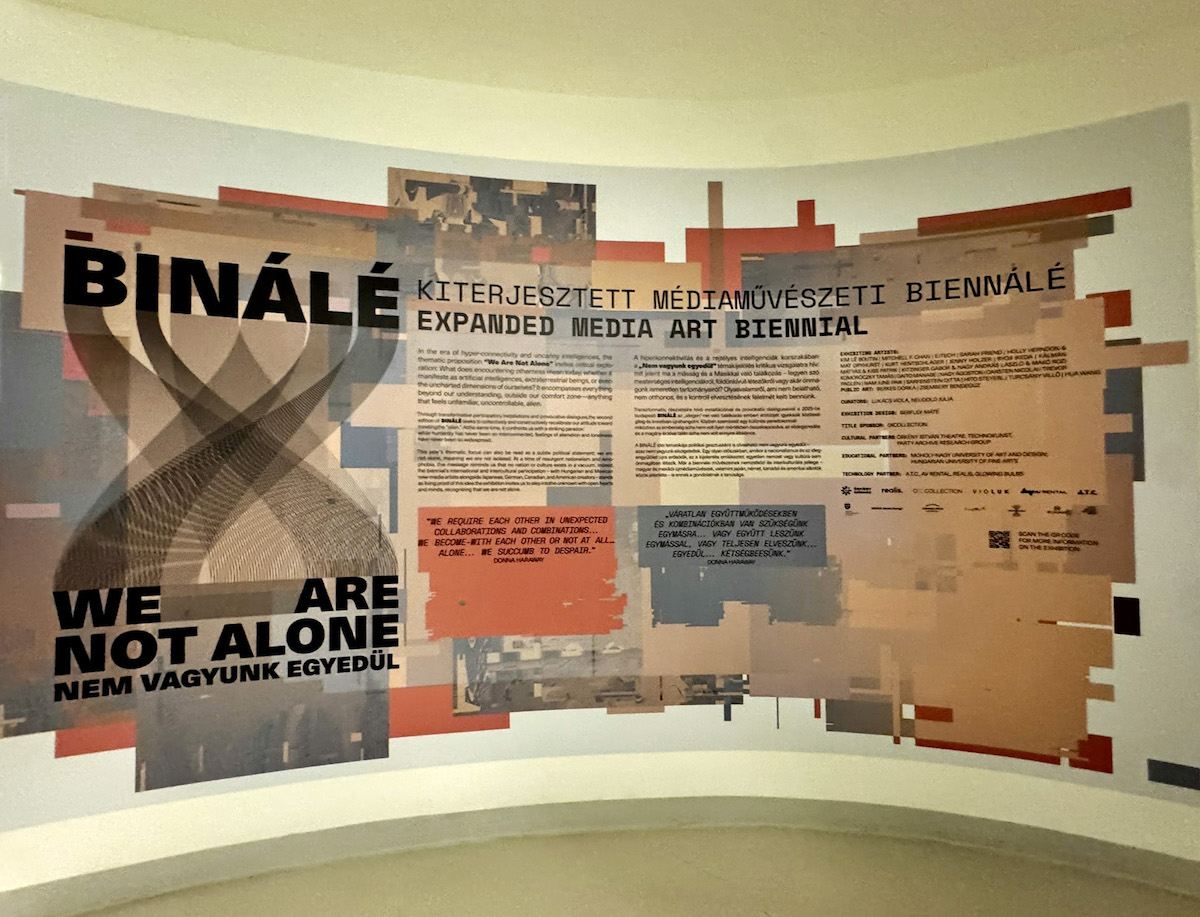In an era when the digital medium has become not just a tool but an extension of consciousness itself, We Are Not Alone, part of the Budapest Expanded Media Art Biennale, boldly explores new traditions and languages shaped by our time. On view at the Merlin Theatre from 17 September to 26 October, the exhibition brings together 22 international artists whose immersive installations examine the intersections of democracy, social media, artificial intelligence, and personal identity. As curators Viola Lukacs and Julia Neudold describe, the works “probe what it truly means to live among others — human, machine, and beyond.”
Amongst the diverse and interesting pieces filling the entirety of the two-story venue – including ‘Brain of a Robot ‘, a classic work by ‘father of video art’ Nam June Paik – four pieces stood out, exemplifying the tensions and beauty inherent in our digital age: Carsten Nicolai’s elegiac Nebelkammer, the pulsating installation X by Gábor Kitzinger, András Lászlo and Máko Rozi, Kurt Hentschlager’s hypnotic sensory SUB, and the thought-provoking digital mutation of Xhairymutantx and I’m Here, by Holly Herndon and Mat Dryden.
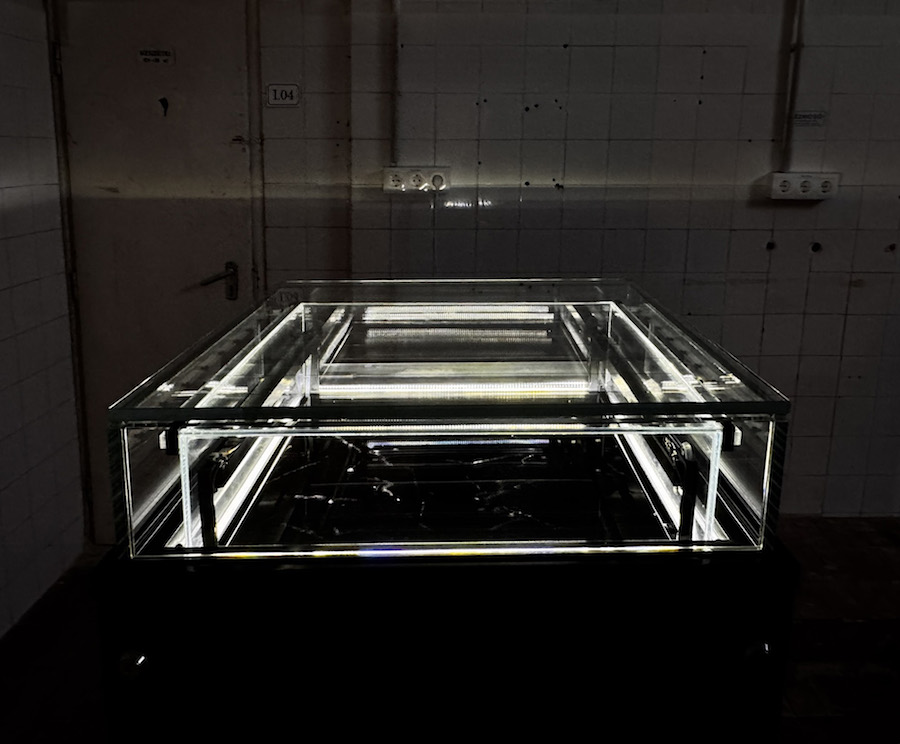
Carsten Nicolai’s installation, Nebelkammer – Cloud Chamber, in English, is housed in what appears to be a repurposed bathroom. The white tiles and battered terracotta floors lend a familiar, if degraded, backdrop, a counterpoint to the sleek, black, altar-like structure, comprised of two black, glistening cubes topped with strips of light emanating within a shallow, double-layered, thick glass box, sitting in its midst. Suspended within this minimalist shrine is a mesmerising galaxy of white grains in constant motion that appear and disappear in a pitch-dark pool of water, accompanied only by the discreet ambient hum of electricity. Elegiac and Nicolai’s work evokes a sense of the eternal, using the transience of the digital to transcend its inherent chaos. Its power lies in its sublime quiet, inviting contemplation, drawing the viewer into a meditative state. In a world saturated with digital noise, it suggests that silence itself can become a profound act of expression.
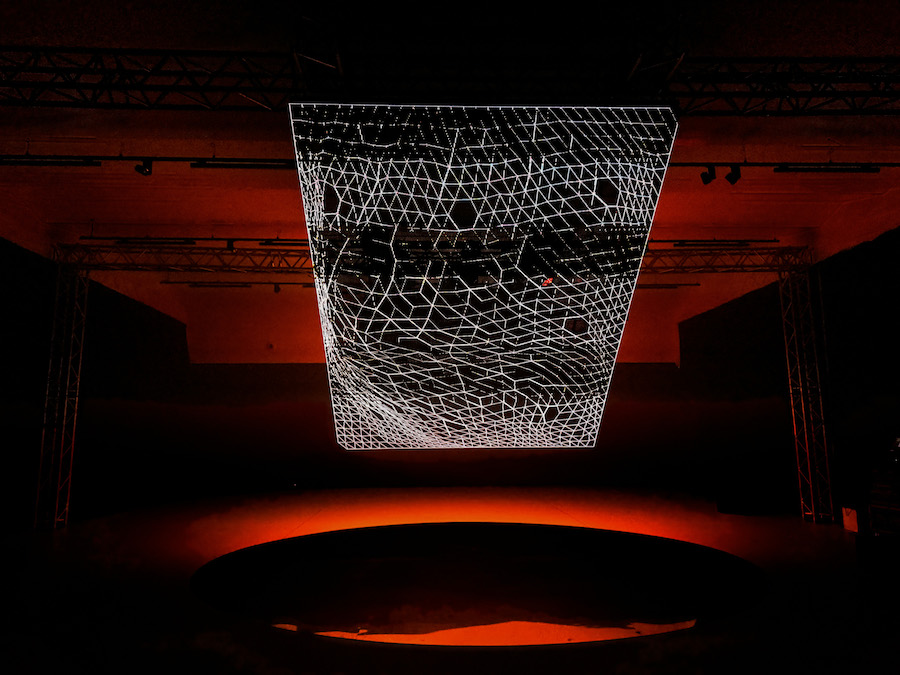
In stark contrast, X by Gábor Kitzinger, András Lászlo and Máko Rozi delivers an overwhelming sensory experience. Alone in a large, darkened space, the piece features flower-shaped strobe lights within a suspended inverted pyramid structure, reflecting off a mirrored disc on the floor below to create a pulsing, constantly changing net of red and white light. The accompanying soundscape is visceral: a rhythmic, breathing, pounding sonic pulse that feels almost corporeal.
The installation oscillates between the organic and the mechanical, its flickering lights and pumping sound reminiscent of both a living organism and the relentless heartbeat of the universe. This duality is captivating, evoking feelings of awe and disquiet as it challenges the viewer to consider the symbiotic relationship between humanity and technology.
Austrian-born NY resident Kurt Hentschlager’s installation, SUB, immerses the viewer in an overwhelming fusion of light and sound. Entering the space behind two sets of black curtains intended to keep out all light, the visitor is immediately swallowed in a dense, enveloping darkness, ruptured only by sudden, unpredictable bursts of strobing light. A soundscape of deep, resonant tones and throbbing rhythms seems to merge within the viewer’s own body, while each flash of light lingers on the eye like an afterimage, blurring the boundary between perception and sensation.
A profound exploration of how technology can manipulate and redefine our sensory experiences, SUB creates an environment where the loss of visual anchors forces the participant to rely on other senses. It provokes both awe and disorientation, embodying the fragile interface between human consciousness and digital environments.
As Hentschlager explains, ‘What fascinates me about creating environments like SUB is the profound perceptual and psychological shift that occurs when ordinary light—and with it, normal visibility—is simply turned off. In the resulting darkness, the ambiguous, elusive, and intricate 2D/3D gestalt of “light” imprinted on our retinas begins to emerge and then slowly dissolve. Poetically, it feels like watching the present moment slip into the past.’
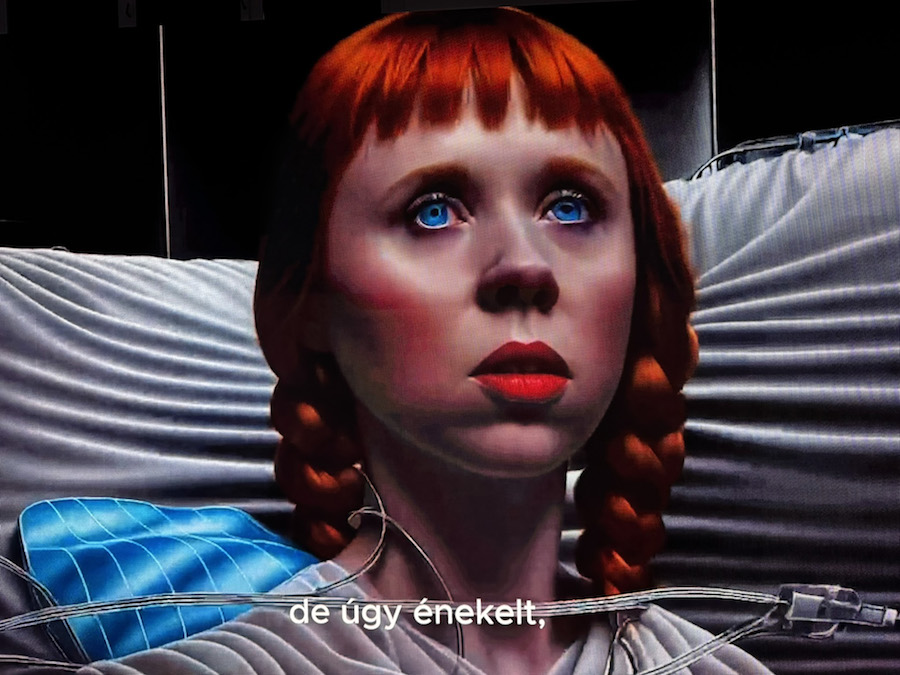
Perhaps the most conceptually and technically ambitious work in the exhibition is Xhairymutantx and I’m Here collaborations between artists Holly Herndon and Mat Dryhurst. In this piece, the artists have created a digital animation game rooted in artificial intelligence. Players engage with the game to earn and control unique characters, challenging its algorithms, accumulating data, and ultimately altering the game’s character dynamics. Based on Holly Herndon’s digital persona, the system evolves, creating its own mutant—a reflection of the player’s interactions.
Xhairymutantx confronts the viewer with questions of digital identity, agency, and the mutability of self in the age of AI. It is also an experiment in accumulated data, showcasing how algorithms adapt and evolve, much like humans. The work’s interactivity and self-referential nature highlight the fluid boundaries between creator, participant, and the digital entities we foster.
As the exhibition explores the complexities of AI and the languages of today’s digital landscape, it moves between awe-inspiring innovation and references to early digital art. While some pieces seem to harken back to the early techno and digital era, others push boundaries, exploring how digital mediums can connect rather than divide.
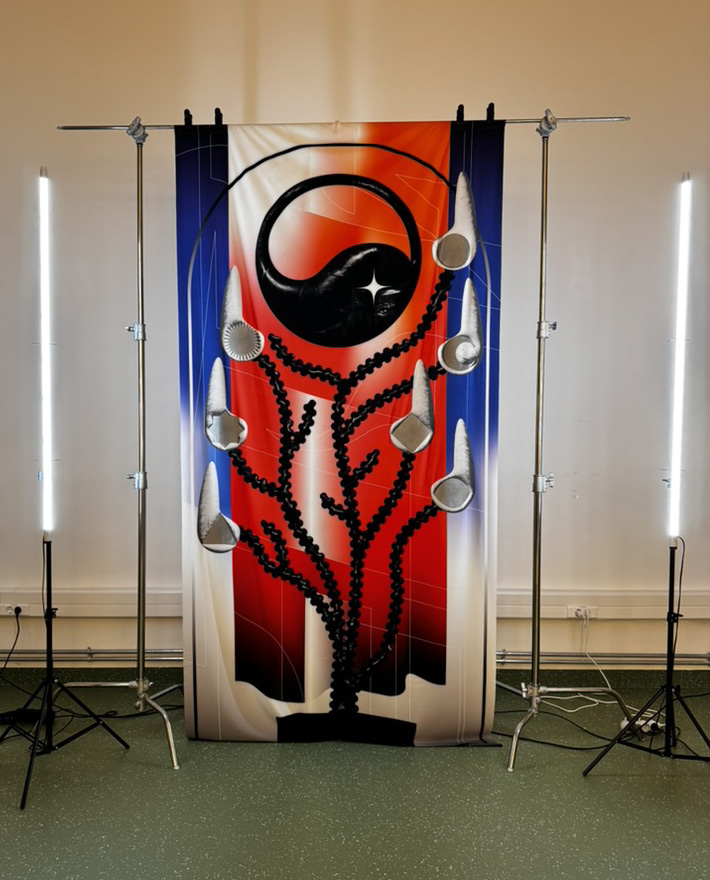
Interactive elements are a recurring theme—whether it’s touching the silver panels that emit booming sounds in the textile piece SUBSURFACE/DEUSS SIVE NATURAA by EJTECH (Judit Eszter Karpati and Esteban de la Torre) or engaging with digital flowers in Kim Le Boutin’s La Voie des Fleurs. These interactions underscore both the potential and limitations of digital art. When successful, they create immersive experiences that blur the line between observer and participant; when not, they highlight the fragility of technology’s promise.
Ultimately, this exhibition is a fascinating reflection of our time, exploring how digital languages can be both connective tissue and disruptive force. It’s a worthwhile journey through the evolving landscape of digital art, posing essential questions about identity, technology, and the future of human experience.
Binálé, We are not alone, expanded media art biennale, Merlin Theatre, Budapest 17 September – 26 October 2025

